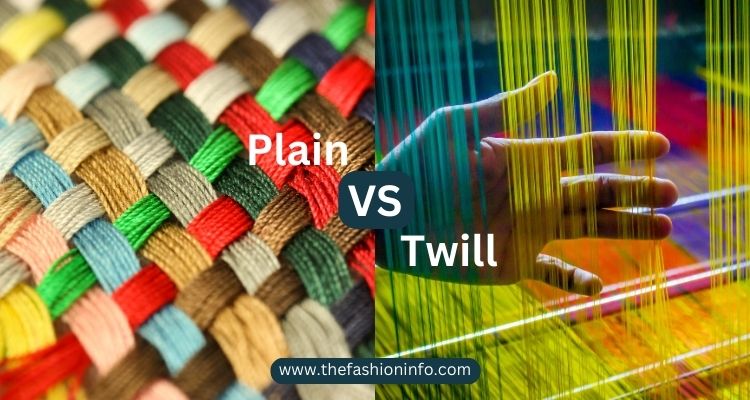Understanding the distinction between plain vs twill weave is crucial for choosing the right fabric for clothing, upholstery, or textiles. These two fundamental weaving techniques shape durability, texture, and functionality. Let’s break down their differences, drawbacks, and ideal applications.
When selecting fabrics for clothing, upholstery, or crafts, understanding weaving techniques types like plain weave and twill weave can make all the difference. These two foundational methods shape the texture, durability, and purpose of textiles. Let’s unravel their unique traits, ideal applications, and tips for choosing the right one for your project.
Table of Contents
What Is Plain Weave?
Plain weave, the simplest and most common textile structure, interlaces threads in a basic over-under pattern. Each weft thread passes alternately over and under warp threads, creating a balanced, grid-like surface. Popular examples include cotton calico, chiffon, and organza. To know more types of weaving, read complete article
Plain Weave Key Features:
- Durability: Tight interlacing resists fraying.
- Lightweight: Ideal for breathable summer fabrics.
- Low Stretch: Holds shape well but lacks flexibility.
This weave excels in everyday items like bed linens, dress shirts, and canvas tote bags.
What Is Twill Weave?
Twill weave uses a diagonal rib pattern by offsetting weft threads by one or more warp threads in each row. This creates a distinctive texture seen in denim, tweed, and chino.
Twill Weave Key Features:
- Softness: Looser structure feels pliable against skin.
- Durability: Diagonal pattern hides stains and wear.
- Drape: Flows smoothly, perfect for tailored garments.
Denim jeans and wool suits often rely on twill for its rugged yet polished appeal.
Plain vs Twill Weave: Key Differences
While both weaves have merits, their contrasts lie in structure and function:
-
Structure:
- Plain Weave: The simplest pattern, where each weft thread alternates over and under each warp thread (1:1 ratio). Creates a flat, grid-like surface (e.g., cotton, chiffon).
- Twill Weave: Features a diagonal rib pattern. Weft threads pass over multiple warp threads (e.g., 2:1 or 3:1 ratio), seen in denim, tweed, or herringbone.
-
Texture:
- Plain weave fabrics are lightweight, smooth, and breathable.
- Twill fabrics are thicker, softer, and more flexible due to the diagonal structure.
-
Visibility of Stains/Wrinkles:
- Plain weave shows stains and creases more prominently.
- Twill’s diagonal pattern hides imperfections better.
| Aspect | Plain Weave | Twill Weave |
|---|---|---|
| Pattern | Grid-like, uniform | Diagonal ribs |
| Texture | Crisp, flat | Soft, slightly raised |
| Durability | High (tight weave) | High (hides abrasions) |
| Common Uses | Sheets, blouses, upholstery | Jeans, jackets, workwear |
| Maintenance | Wrinkles easily | Resists creases |
Disadvantages of Twill Weave
While twill is versatile, it has limitations:
- Complex Production: Twill weaving requires specialized looms, raising manufacturing costs.
- Heavier Weight: The dense structure can reduce breathability, making it less ideal for summer wear.
- Potential for Shine: Over time, diagonal ridges may develop a sheen, altering the fabric’s appearance.
How to Choose Between Plain vs Twill Weave
Your decision hinges on three factors:
- Purpose:
- Opt for plain weave if you need lightweight, structured fabrics (e.g., quilting cotton, table linens).
- Choose twill for durable, flexible items (e.g., bags, heavy-duty apparel).
- Aesthetic:
- Plain weaves suit minimalist, crisp designs.
- Twill adds subtle texture and depth.
- Care:
- Plain weave often requires ironing.
- Twill’s forgiving nature needs less upkeep.
Real-World Applications
- Fashion: Plain weave shines in airy blouses, while twill dominates denim and trench coats.
- Home Décor: Use plain weave for delicate curtains; pick twill for sturdy sofa covers.
- Crafting: Twill’s drape suits DIY tote bags, whereas plain weave stabilizes embroidery projects.
Final Thoughts
In the plain vs twill weave debate, neither is universally superior. Plain weave offers simplicity and lightness, while twill delivers resilience and visual depth. Match your choice to the project’s demands—whether prioritizing longevity, comfort, or aesthetics.
Neither plain nor twill weave is inherently “better”—they serve different needs. Plain weave offers simplicity and breathability, while twill delivers rugged elegance. Consider your project’s demands, and let the fabric’s structure guide you.
Pro Tip: Test swatches before committing. Feeling the texture and observing how each weave handles stress ensures you’ll love the result!
FAQ
Is Twill More Durable Than Plain Weave?
Yes! The twill weave’s interlaced yarns create a tighter, stronger fabric. For example, denim (twill) outlasts plain-weave cotton shirts in rugged use. However, plain weave excels in lightweight applications like linens or formal wear.
Plain vs Twill Weave: Which is Best?
The “best” weave depends on your needs:
- Choose Plain Weave for breathability, affordability, and crispness (e.g., bedsheets, blouses).
- Opt for Twill for durability, flexibility, and texture (e.g., jeans, workwear, upholstery).

